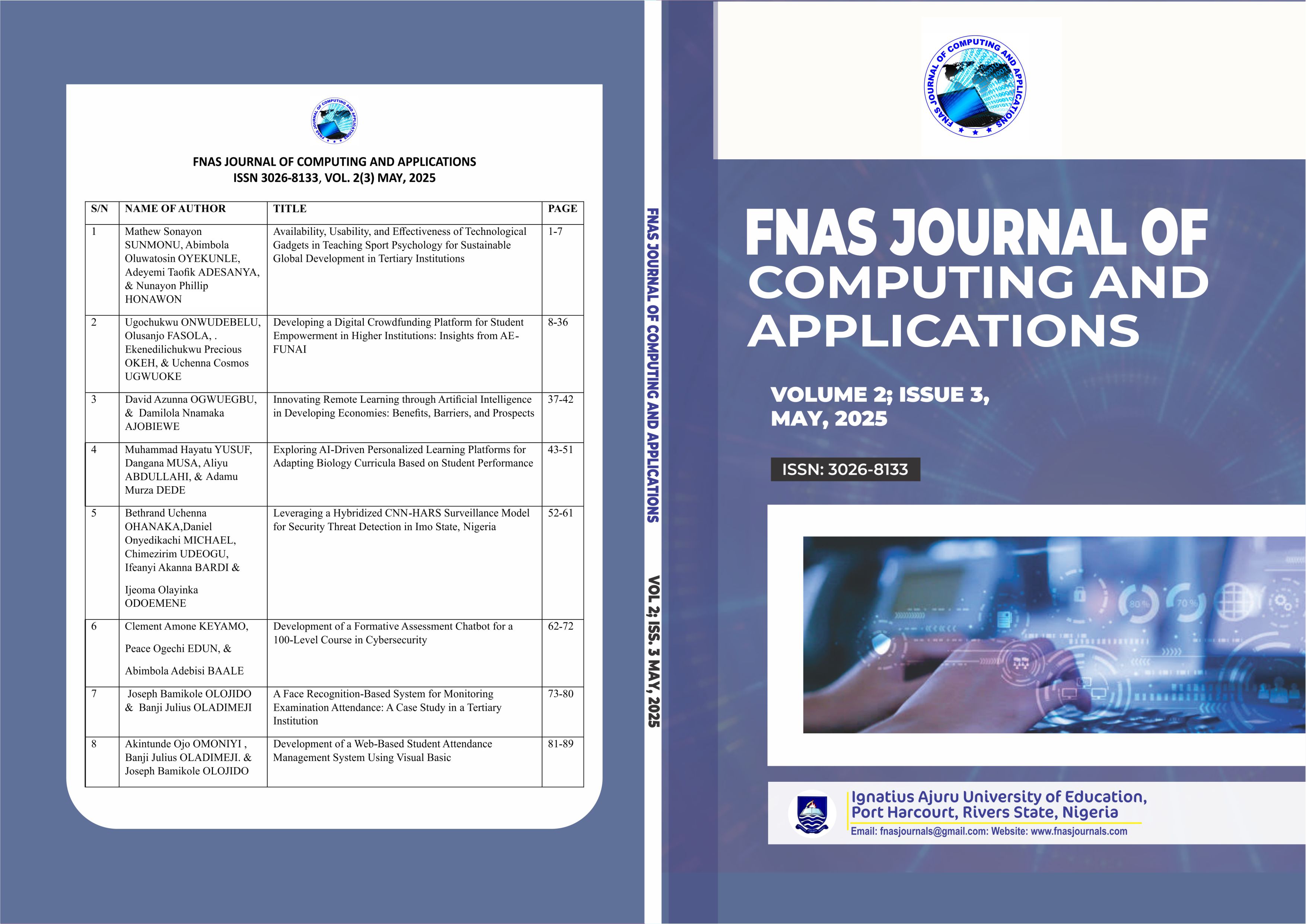Development of a Web-Based Student Attendance Management System Using Visual Basic
DOI:
https://doi.org/10.63561/jca.v2i3.839Keywords:
Attendance Management System, Visual Basic, Student Monitoring, Web Application, Educational TechnologyAbstract
Efficient attendance tracking plays a vital role in overseeing and improving student performance in educational settings. Conventional manual attendance methods are typically slow, prone to mistakes, and lack efficiency, resulting in administrative difficulties and possible errors in maintaining accurate records. This study introduces the development and deployment of a web-based Student Attendance Management System built with Visual Basic. The system streamlines the process of recording attendance through automation, enhances data accuracy, and simplifies reporting processes. Key features include user authentication, subject-wise attendance logging, and the generation of detailed reports. The system significantly reduces administrative workload, improves the reliability of attendance data, and facilitates informed decision-making by academic staff. It has been successfully deployed and tested within an academic environment, demonstrating operational efficiency and user satisfaction.
References
Afolayan, A. A., & Afolayan, T. A. (2022). Digital transformation in Nigerian universities: Impact of student information systems. Journal of Educational Technology Systems, 50(2), 221–238. https://doi.org/10.1177/00472395221087002
Khan, R. A., Rafiq, M., & Noor, F. (2023). Enhancing academic performance through automated attendance monitoring systems. International Journal of Emerging Technologies in Learning (iJET), 18(7), 92–104. https://doi.org/10.3991/ijet.v18i07.37981
Obi, I. E., & Nwachukwu, A. O. (2021). Class attendance and student performance in Nigerian tertiary institutions: A critical review. African Journal of Educational Research, 25(3), 45–58.
Olowolagba, R. O., Uche, I. T., & Adebayo, A. B. (2020). Application of biometric attendance systems in Nigerian universities: A case study. International Journal of Educational Research and Technology, 11(1), 12–19. DOI: https://doi.org/10.1016/S0969-4765(20)30097-7








